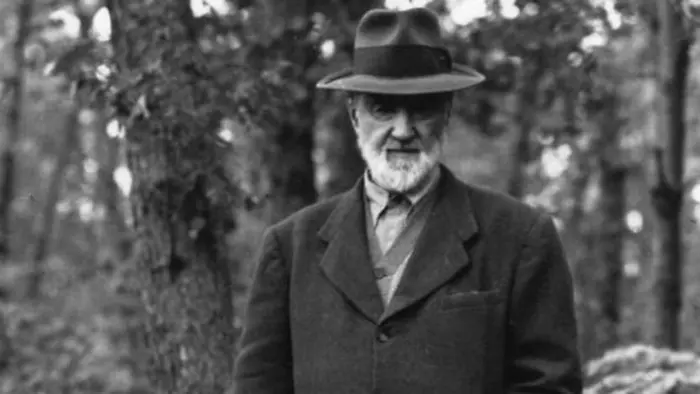When we think about classical music, names like Bach, Beethoven, and Mozart often come to mind. However, American classical music has its own rich history, shaped by unique cultural influences and pioneering composers. Among these early innovators, one name stands out: Charles Ives. His contributions to American classical music are unparalleled, and his innovative spirit set the stage for future generations of composers.
I. Early Life and Background
Charles Edward Ives was born on October 20, 1874, in Danbury, Connecticut. His father, George Ives, was a bandleader and a highly influential figure in Charles’ life. George Ives exposed his son to a wide variety of music, including hymns, marches, and classical pieces. This eclectic musical environment profoundly shaped Charles’ understanding and approach to composition.
II. Education and Early Influences
Charles Ives attended Yale University, where he studied under the tutelage of Horatio Parker, a renowned composer of the time. Parker’s traditional approach to composition clashed with Ives’ more experimental tendencies. Despite this, Ives absorbed valuable lessons in structure and form, which he later combined with his unconventional ideas.
III. Innovations in Composition
One of Ives’ most significant contributions to American classical music was his use of polytonality, the simultaneous use of multiple keys in a single piece. This technique was revolutionary and challenged the conventional harmonic practices of the time. Ives’ daring approach to harmony can be heard in works such as the “Concord Sonata” and “Three Places in New England.”
Another hallmark of Ives’ music is his incorporation of American folk tunes and popular music. He seamlessly blended these elements with classical forms, creating a uniquely American sound. His use of familiar melodies within complex structures made his music both accessible and intellectually stimulating.
IV. Notable Compositions
1. The “Concord Sonata”
The “Concord Sonata,” officially titled “Piano Sonata No. 2, Concord, Mass., 1840–1860,” is one of Ives’ most celebrated works. Composed between 1915 and 1919, the sonata is a tribute to the Transcendentalist writers Ralph Waldo Emerson, Nathaniel Hawthorne, Bronson Alcott, and Louisa May Alcott. Each movement is dedicated to one of these figures and reflects their philosophical ideas through music.
The sonata is known for its technical difficulty and complexity. It features innovative techniques such as tone clusters, which involve pressing multiple keys simultaneously to create a dense, dissonant sound. Ives also incorporated a flute part in the second movement, “Hawthorne,” to add an ethereal quality to the piece.
2. “Three Places in New England”
“Three Places in New England,” also known as “Orchestral Set No. 1,” is another masterpiece by Ives. Composed between 1911 and 1914, this orchestral work consists of three movements, each depicting a different location in New England.
“The St. Gaudens in Boston Common (Col. Shaw and his Colored Regiment)”
“Putnam’s Camp, Redding, Connecticut”
“The Housatonic at Stockbridge”
In this work, Ives employs his signature techniques of polytonality and quotation of folk tunes. The piece is a vivid musical portrayal of American landscapes and history, capturing the spirit and essence of New England.
3. Others
Beyond the “Concord Sonata” and “Three Places in New England,” Ives composed numerous other works that contributed to his legacy as a trailblazer in American classical music. Some of these include:
a. “The Unanswered Question”
Composed in 1908, “The Unanswered Question” is a chamber work that juxtaposes a serene string ensemble with a dissonant trumpet solo and woodwind quartet. The trumpet poses a musical “question,” while the woodwinds provide an increasingly agitated response. This piece is often interpreted as a philosophical exploration of existence and the search for meaning.
b. “Symphony No. 4”
Ives’ “Symphony No. 4” is a monumental work that showcases his ability to blend diverse musical elements into a cohesive whole. Composed between 1910 and 1924, the symphony is structured in four movements, each with its own distinct character. The complexity and scope of this work have led some to consider it one of the greatest American symphonies ever written.
c. “Central Park in the Dark”
This tone poem, composed in 1906, vividly depicts the atmosphere of Central Park at night. Ives uses a variety of musical techniques, including dissonance and layered textures, to create an immersive soundscape. The piece captures the hustle and bustle of the city while also evoking a sense of tranquility and introspection.
V. Early Recognition and Reception
During his early years, Charles Ives faced significant challenges in gaining recognition for his work. The avant-garde nature of his compositions did not sit well with the conservative music establishment of the early 20th century. Critics and audiences often found his music difficult to understand and appreciate. However, there were a few notable figures who recognized Ives’ genius early on. Pianist E. Robert Schmitz and conductor Nicolas Slonimsky were among the first to champion his music, helping to bring it to a wider audience.
VI. Legacy and Influence
Charles Ives’ music was not widely recognized during his lifetime. He worked as an insurance agent to support himself and composed in his spare time. It was only later in his life that his works began to gain attention and appreciation. Today, Ives is regarded as a visionary and a pioneer of American classical music.
Ives’ influence can be seen in the works of later American composers such as Aaron Copland, Leonard Bernstein, and John Cage. His willingness to experiment and push the boundaries of traditional music paved the way for future generations to explore new possibilities in composition.
See Also: A Deep Dive into the Era of Classic Music: All You Want to Know
VII. Conclusion
Charles Ives’ innovative spirit and unique approach to composition make him the most important early innovator in American classical music. His use of polytonality, incorporation of American folk tunes, and creation of complex, intellectually stimulating works set him apart from his contemporaries. Ives’ legacy continues to inspire and influence composers today, cementing his place as a foundational figure in the history of American classical music.

